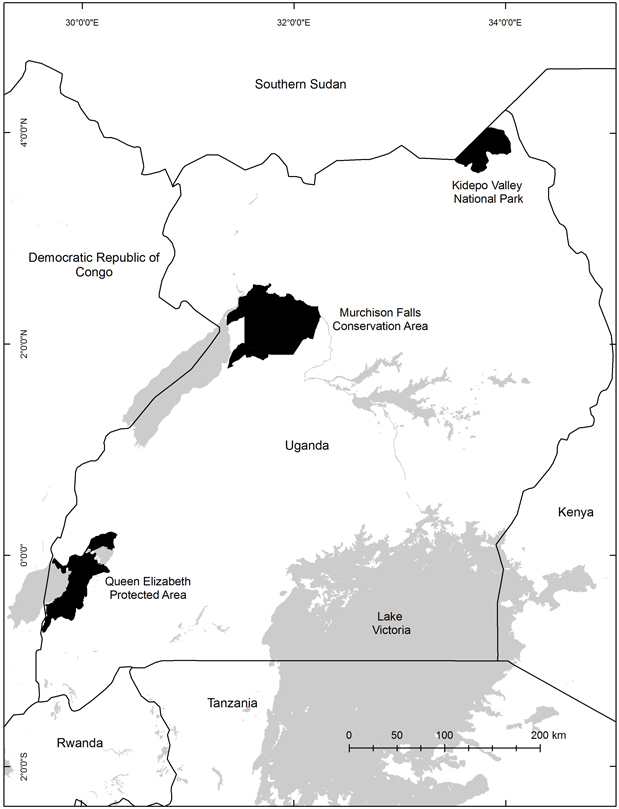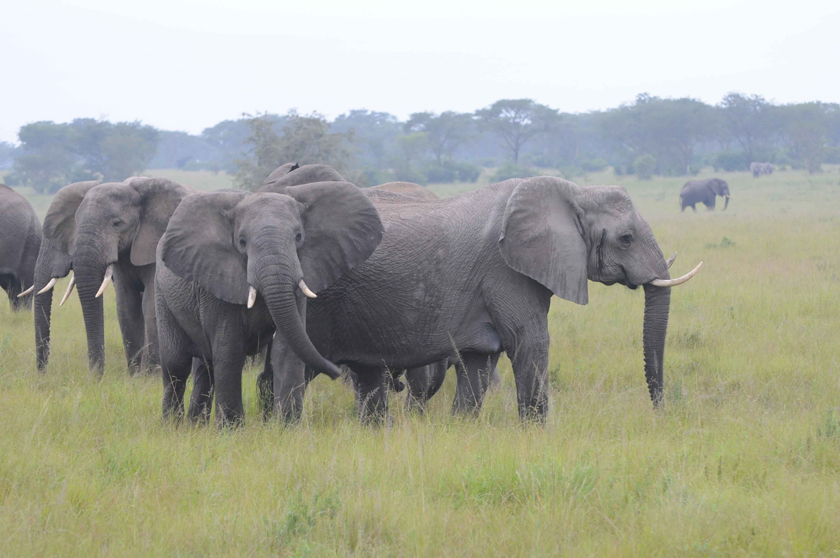Bucking The Trend: Uganda’s Elephants On The Rise
Despite unprecedented losses all around, Uganda’s elephant population continues to increase.
By Vicki Croke
Uganda’s doing something right elephant-wise.
While elephants, besieged by poachers across so many African nations, are dying in the tens of thousands every year (it’s estimated that 96 elephants are killed in Africa each day), a new aerial survey shows that their numbers are increasing in Uganda.
And the gains are significant, especially for a species for whom reproduction is such a slow process. The population, which was estimated at 1,000 in 1985, now stands at 5,000, according to just-released figures from The Wildlife Conservation Society, which supported the survey.
The aerial survey is part of “The Great Elephant Census,” a two-year effort, conducted by the group Elephants without Borders, to compile accurate information on elephant numbers and distribution across nearly two dozen African countries. (The survey is funded by Paul G. Allen, a Microsoft co-founder.)
Rampant poaching in the 1970s and ‘80s decimated Uganda’s elephant population and drove the animals into the confines of more protected parks. But the tide began turn in the 1990s. Even as other countries have struggled, the Uganda Wildlife Authority and conservation partners, including WCS, began to gain some traction in saving elephants.
Conservationists credit better protection in key parks as well as government support as important factors in the turnaround for elephant management in this country.
But there are several reasons why elephant conservation is working in Uganda, according to Andy Plumptre, the director of WCS’s Albertine Rift Program. High on his shortlist of factors is cutting-edge technology that sounds a bit like something the Defense Department designed. It’s a sophisticated software suite called SMART (Spatial Monitoring And Reporting Tool) that helps rangers on anti-poaching patrol see the bigger picture. As United for Wildlife explains on their website, “As rangers patrol in the field, they capture where they go and what they see and do (e.g. removing a snare, seeing a rhino, arresting a poacher). Back at HQ, this data is fed into SMART. The software synthesizes and analyzes this information and converts it into easily understood, informative statistics, maps, and reports.” Specific poaching areas tend to stay the same year after year, and the tool identifies those areas.
The Uganda Wildlife Authority developed a prototype to SMART, something called MIST.
Plumptre says wildlife officials in Uganda “Have used this to map where illegal activities are happening, to target patrolling in the hotspot poaching areas, and to ensure that patrols cover most of the parks because MIST also mapped where patrols had been.”
Plumptre stresses that government participation is vital too. “There has been support from the Government and army to conserve wildlife for the tourism industry,” he says, “and the military has provided a battalion of soldiers to the parks to help UWA protect them as well as ensure security.”
There could be another contributing factor. A disconcerting one. It’s possible that poachers just didn’t realize there were so many elephants here. “It may also be that poaching networks have thought that Uganda had few elephants left,” Plumptre says, “and that it was not worthwhile coming here—numbers dropped to about 1,000 in the mid 1980s because of extensive poaching (from about 60,000 in the 1960s)—so the impression is that there wasn’t much left.”
But the new report shows there is: There are about 1,330 elephants in Murchison Falls National Park, 2,913 in Queen Elizabeth National Park, and 656 in the Kidepo Valley National Park (including a neighboring community wildlife area).
The good news stands in contrast to the latest reports from other areas.
WCS announced just days ago that nearly half of Mozambique’s elephants have been wiped out over the past five years. The population crashing from about 20,000 down to 10,300.
Elephants Without Borders estimates that there are about 470,000 elephants left in Africa, down from several million just a hundred years ago.
The picture isn’t perfect in Uganda. Plumptre says, “Our findings of 13 fresh/recent elephant carcasses in Queen Elizabeth Park for instance has been flagged and we are working with UWA there to ensure that intelligence gathering activities are improved, that patrolling is made more effective aiming to stop the killing that was noted there in 2014 and which hadn’t been seen previously in that park.” He’d like to see protections that cross borders just as elephants do, for instance, both within Uganda and along its border with neighboring Virunga National Park in Democratic Republic of Congo.
But he also points out that these new numbers prove that “While most elephant populations are declining across Africa these results show how a commitment to supporting effective protection of elephants can lead to their recovery.”






2 Responses to “Bucking The Trend: Uganda’s Elephants On The Rise”
Great job; great photos!
Impressively written. Thanks Andy. This is rather positive news given recent stories around ivory and wildlife management in Uganda.
Paul
Comments are closed.